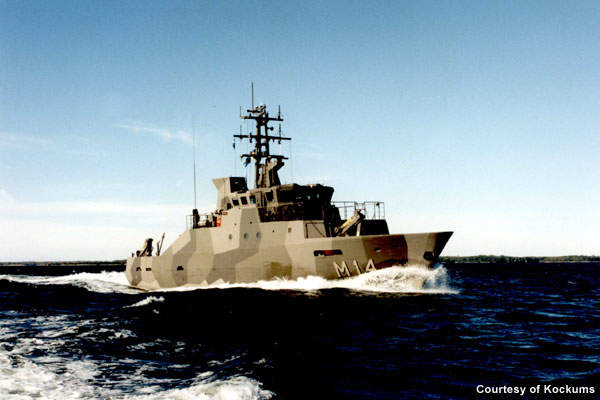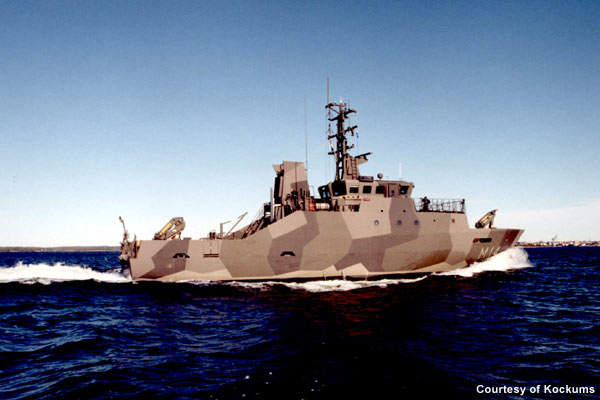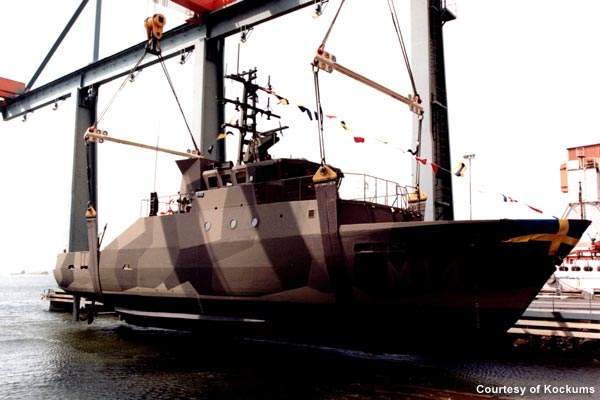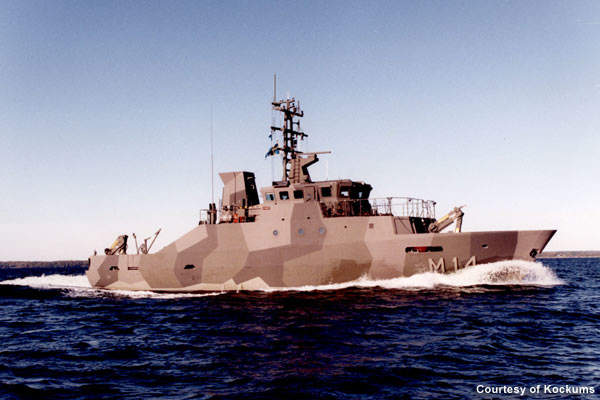The Styrsö Class mine countermeasures vessels (MCMV) are in service with the Swedish Navy. The class was built by Sweden-based Kockums, an arm of ThyssenKrupp Marine Systems. The four vessels are named after islands from archipelagos of Sweden.
The first vessel of the class, HMS Styrsö, was launched in March 1996 and commissioned in September 1996; the second, HMS Spårö, was launched in August 1996 and commissioned in February 1997; the third, HMS Skaftö, was launched in January 1997 and commissioned in June 1997; and the last vessel in the class, HMS Sturkö, was launched in June 1997 and commissioned in December 1997. The 3rd Naval Warfare Flotilla and 4th Naval Warfare Flotilla of Swedish Navy operate the vessels.
HMS Spårö and HMS Sturkö were modified to mine clearance divers support vessels in 2004. The minehunting abilities of the vessels were retained. The modified ships are also referred to as the Spårö Class.
Styrsö Class vessels demonstrate a high degree of manoeuvrability. The medium-sized vessel offers similar capabilities as a large mine countermeasures vessel. These ships can be deployed in coastal waters to perform traditional mine sweeping operations and hunting of bottom mines.
Styrsö design
The Styrsö Class is based on the MCMV 36 design of the Kockums. The vessel is made of glass fibre-reinforced plastic (GRP) sandwich material to provide good resistance against shock.
The hull of the vessel is built with completely non-magnetic material and has very low magnetic and acoustic signatures.
The class is equipped with mechanical, magnetic and acoustic sweeps. A remotely controlled, autonomous SAM minesweeping system is installed for mine-hunting and minesweeping operations.
The forward part of the superstructure has a storage compartment which accommodates the underwater vehicles.
The vessel can carry type Uven underwater remotely operated vehicles (ROVs) and has provisions for the next generation of ROVs.
Styrsö Class combat system
The combat information centre (CIC) is located on the lower deck in the aft of the bridge. The close accessibility between the bridge command and the CIC increases work efficiency. The combat system has five general operator consoles. The fully integrated system is based on commercial off-the-shelf (COTS) technology. The system is built around a local area network (LAN).
Guns
Styrsö Class mine countermeasures vessels are armed with two 12.7mm machine guns.
Mine countermeasures
The Styrsö Class is equipped with self-propelled acoustic magnetic (SAM) system. It is an unmanned minesweeping drone for sweeping of influence mines. The small remote control unit can be installed anywhere onboard the ship. The vessel is fully equipped with systems for sweeping, navigating and remote control operations.
The vessel is also equipped with a mine-hunting module. This module includes an ROV which can be configured as either a mine disposal vehicle (MDV) or a propelled variable depth sonar (PVDS). A minehunting sonar is carried in the bow for the PVDS to conduct route survey and minehunting including underwater search, object detection and classification. In addition to the towed sweep, the combat system includes remotely controlled SAM sweep.
Styrsö Class sonars
The mine countermeasures vessels are fitted with Reson Sea Bat 8100 high-frequency active sonar for mine avoidance and EG & G high frequency side scan sonar for route survey.
Navigation and communication
Navigation is provided by an integrated system which includes sensors, data processing and data distribution equipment.
All sensors are connected to a computer which processes and distributes navigation data through the LAN.
The integrated communication system provides the tactical operators access to internal and external communications. The operator consoles integrated into the bridge feature facilities for communication control and message handling.
Propulsion
Styrsö is powered by two Saab Scania DSI 14 diesel engines. Each engine drives a fixed-pitch propeller through reduction gears. A hydraulically driven waterjet type bow thruster is fitted to provide high manoeuvrability during minehunting. There are two main generators to supply power during normal operations.











